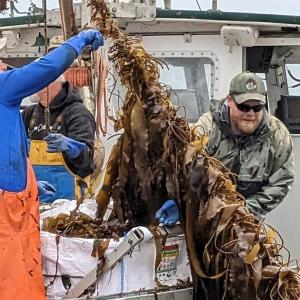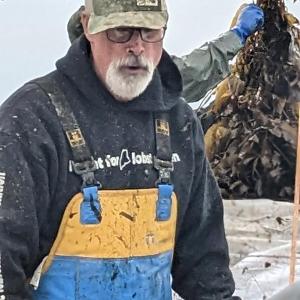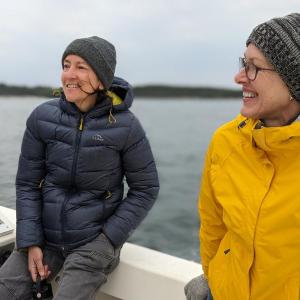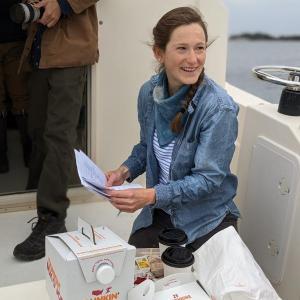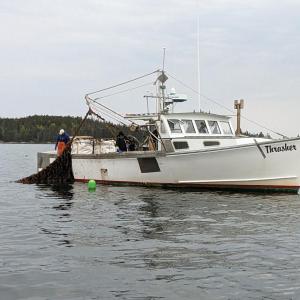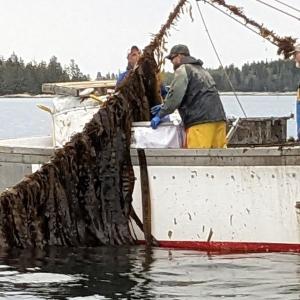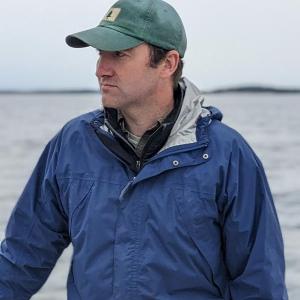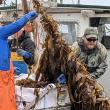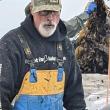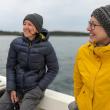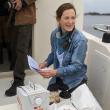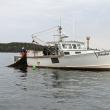Kelp boosts Maine’s marine economy and ecology
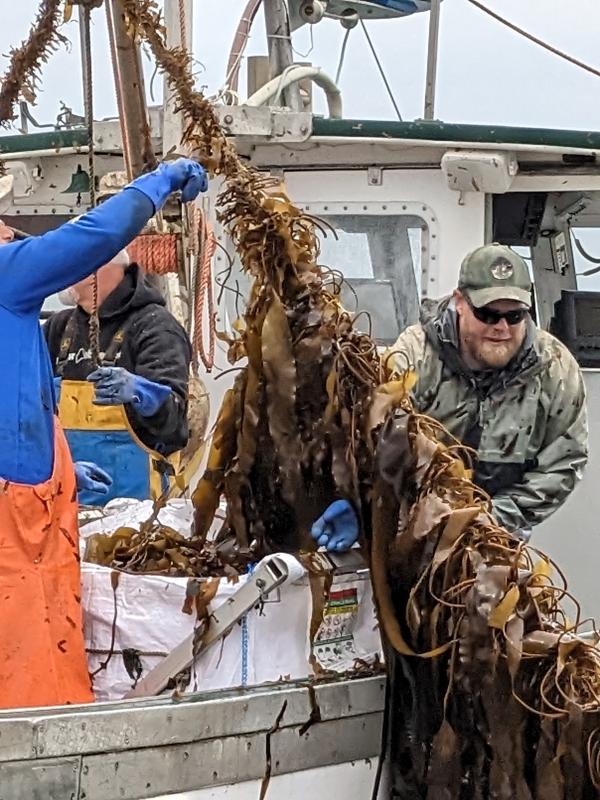 Crew from Thrasher harvest kelp. CANDI JONETH/Boothbay Register
Crew from Thrasher harvest kelp. CANDI JONETH/Boothbay Register
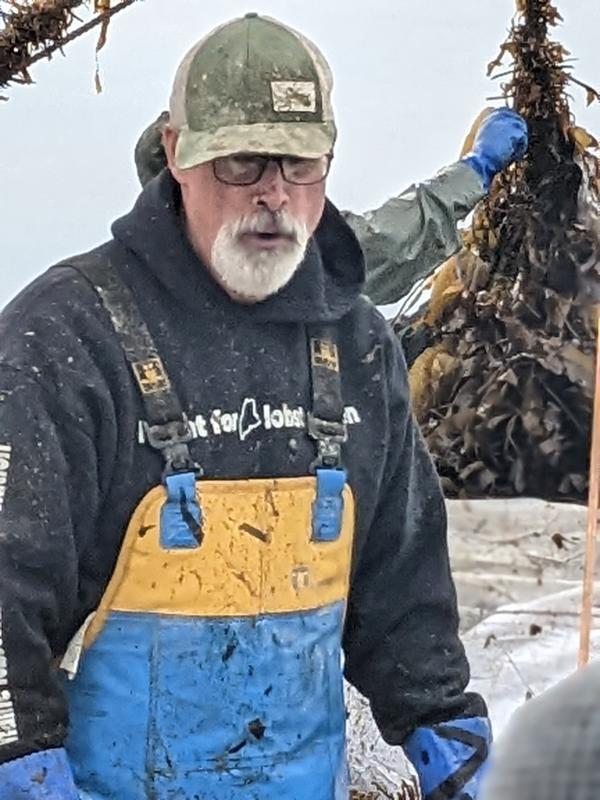 Bob Baines. CANDI JONETH/Boothbay Register
Bob Baines. CANDI JONETH/Boothbay Register
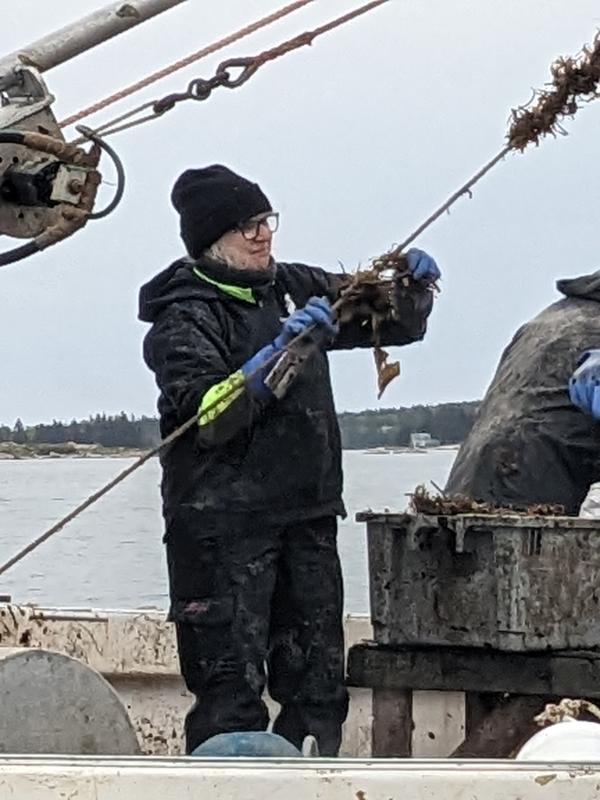 Sue Baines operates the winch during harvest. CANDI JONETH/Boothbay Register
Sue Baines operates the winch during harvest. CANDI JONETH/Boothbay Register
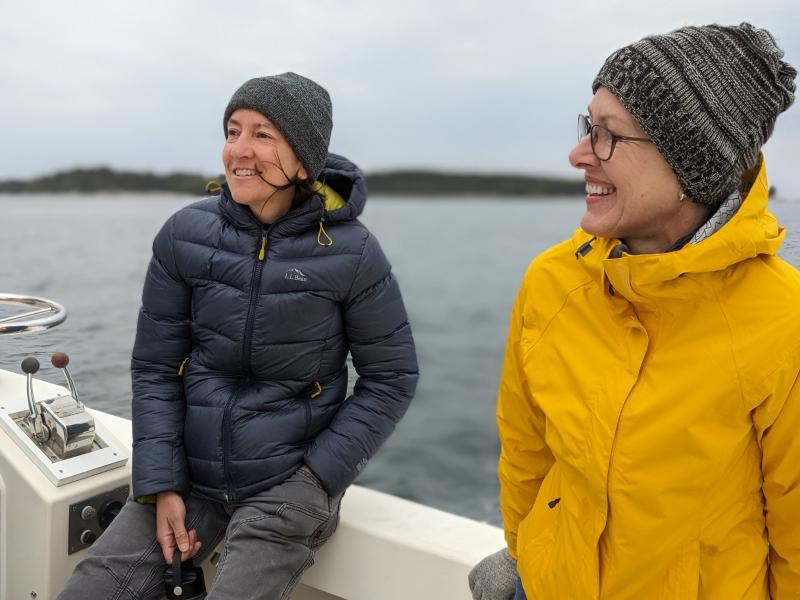 Left Dr. Susie Arnold. Right, Stephanie Welch, both of Island Institute. CANDI JONETH/Boothbay Register
Left Dr. Susie Arnold. Right, Stephanie Welch, both of Island Institute. CANDI JONETH/Boothbay Register
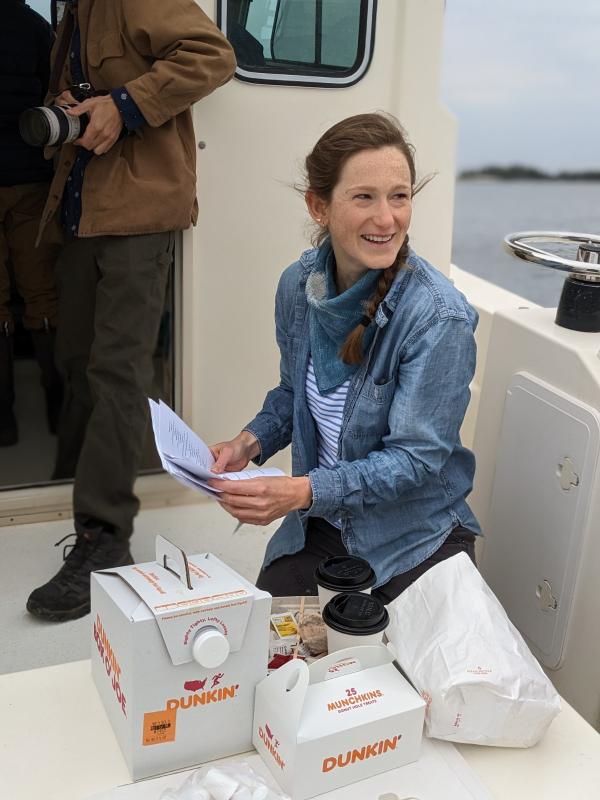 Dr. Molly Miller, Island Institute’s community development officer. CANDI JONETH/Boothbay Register
Dr. Molly Miller, Island Institute’s community development officer. CANDI JONETH/Boothbay Register
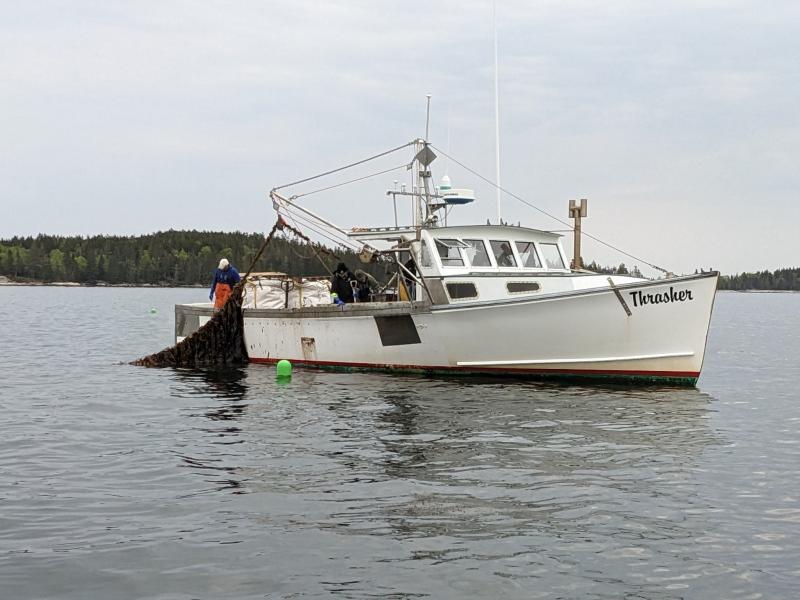 Thrasher pulls lines of kelp. CANDI JONETH/Boothbay Register
Thrasher pulls lines of kelp. CANDI JONETH/Boothbay Register
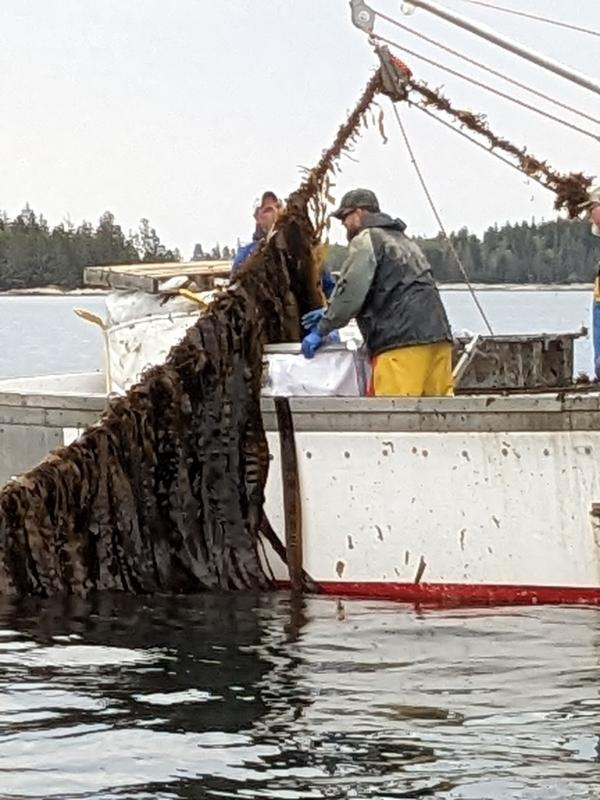 Thrasher pulls lines of kelp. CANDI JONETH/Boothbay Register
Thrasher pulls lines of kelp. CANDI JONETH/Boothbay Register
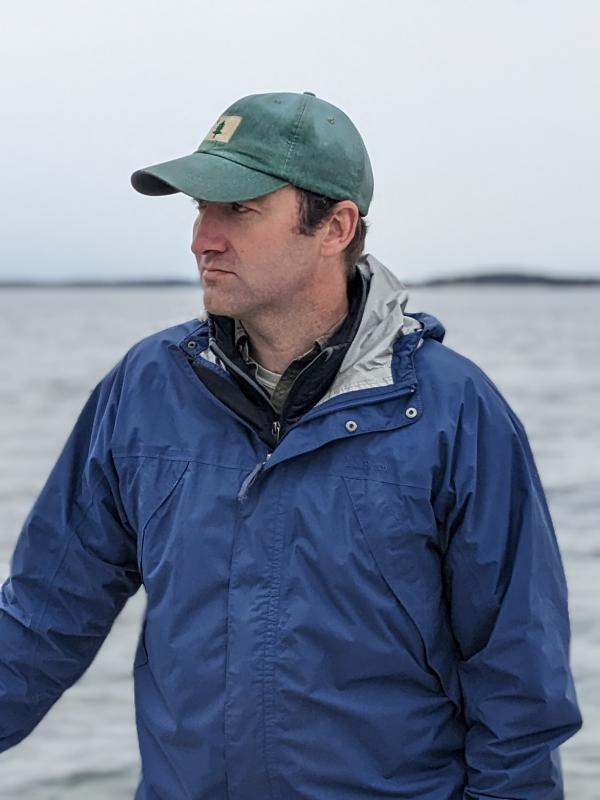 Nick Battista, JD, Island Institute’s chief policy officer. CANDI JONETH/Boothbay Register
Nick Battista, JD, Island Institute’s chief policy officer. CANDI JONETH/Boothbay Register
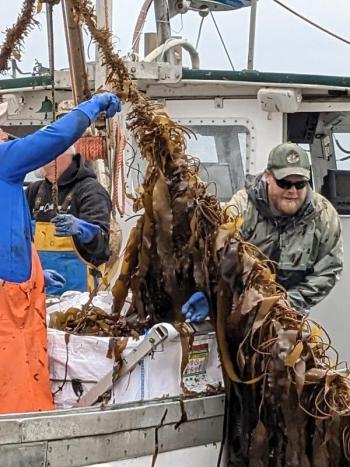 Crew from Thrasher harvest kelp. CANDI JONETH/Boothbay Register
Crew from Thrasher harvest kelp. CANDI JONETH/Boothbay Register
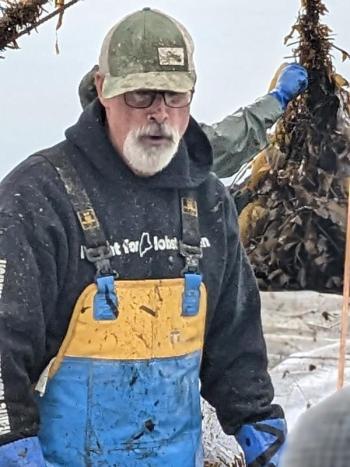 Bob Baines. CANDI JONETH/Boothbay Register
Bob Baines. CANDI JONETH/Boothbay Register
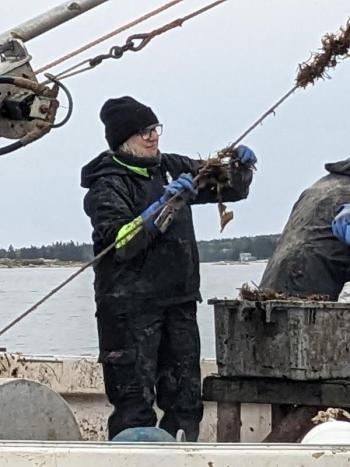 Sue Baines operates the winch during harvest. CANDI JONETH/Boothbay Register
Sue Baines operates the winch during harvest. CANDI JONETH/Boothbay Register
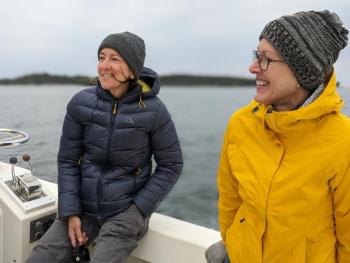 Left Dr. Susie Arnold. Right, Stephanie Welch, both of Island Institute. CANDI JONETH/Boothbay Register
Left Dr. Susie Arnold. Right, Stephanie Welch, both of Island Institute. CANDI JONETH/Boothbay Register
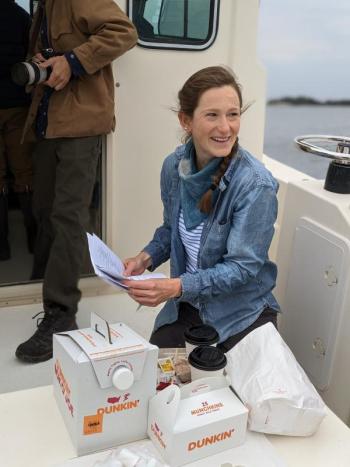 Dr. Molly Miller, Island Institute’s community development officer. CANDI JONETH/Boothbay Register
Dr. Molly Miller, Island Institute’s community development officer. CANDI JONETH/Boothbay Register
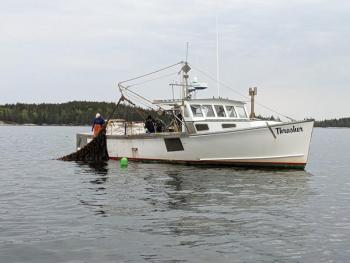 Thrasher pulls lines of kelp. CANDI JONETH/Boothbay Register
Thrasher pulls lines of kelp. CANDI JONETH/Boothbay Register
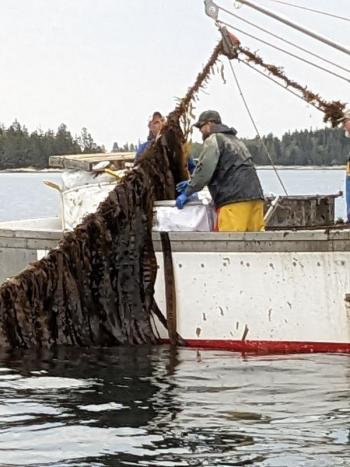 Thrasher pulls lines of kelp. CANDI JONETH/Boothbay Register
Thrasher pulls lines of kelp. CANDI JONETH/Boothbay Register
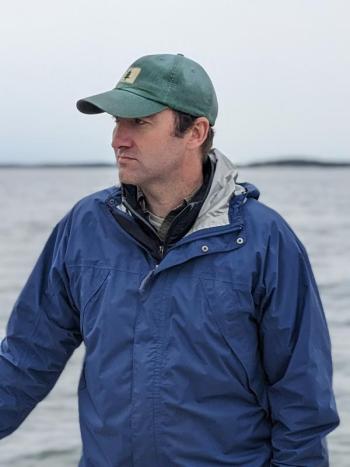 Nick Battista, JD, Island Institute’s chief policy officer. CANDI JONETH/Boothbay Register
Nick Battista, JD, Island Institute’s chief policy officer. CANDI JONETH/Boothbay Register
It’s mid-May on Sprucehead Island, and Bob Baines and crew are wrapping up their 2023 kelp harvest. Baines farms four acres near the Lower Gangway Ledge, 13,000 feet of line for a haul of about 50,000 pounds. The lifelong fisherman began growing kelp in lobster’s offseason to diversify his business. “It’s one piece,” he said. “I lobster, I scallop, and I kelp. It’s a spring paycheck.”
Now in his fourth year of kelp farming, Baines said the decision for him was well-considered. “If you’re already a lobsterman, most of your equipment will transfer to kelp farming. I made a few adjustments, nothing big.” He has invested $30,000 in his kelp operation. His lease, which spans November – May, requires that he take up his moorings, 56 anchors. “And 13,000 feet of rope isn’t cheap,” he chuckled. “And I replace them every two years.”
His kelp seeds are provided for free from Atlantic Sea Farms (ASF) of Biddeford and they guarantee purchase of 100% of his yield. Baines knew he would recover his investment and he views kelp farming as a move toward sustainability of the lobster industry and preservation of Maine’s working waterfronts.
On board Sea Hawk II, Lee Moore of New Harbor is observing the harvest to see if it is a good fit for his fishing operation. “I see it going further into the future,” said Moore. “The benefits of kelp to the environment and that it matches perfectly because it doesn’t compete with lobstering.” Kelp is grown from late fall to late spring, with one harvest just before the kelp release spores. It is cut off lines directly into thousand-pound harvest bags, then frozen.
For growing kelp, “a 40-foot water depth with soft sediment bottom is ideal,” said Nick Battista, chief policy officer, and former marine programs director, for Island Institute (II) in Rockland. If the water is too deep or the bottom is too rocky, the costs become too high for the fishermen. In the protected locations where people are growing kelp, there are no threats for migratory whales, he added.
Fishermen interested in trying kelp farming can apply for experimental leases, up to four acres, said Battista. Standard leases go up to 100 acres, for 20 years. “All leases face a rigorous permitting process. For standard leases public hearings are required. Harbormasters and municipal officials can be involved in this process from the outset,” he said.
Dr. Susie Arnold, senior ocean scientist at II, explained kelp is its own thing. “It’s an alga that resembles an animal in its early stages and a plant in its late stages,” she said. “Kelp is a brown seaweed, of which there are many varieties.”
Arnold conducts research on the impacts of climate change and ocean acidification on Maine’s marine resources and fishing communities. She and Dr. Nichole Price of Bigelow Laboratory for Ocean Sciences co-authored a section of “Scientific Assessment of Climate Change and Its Effects in Maine” for the Maine Climate Council. “The combination of global and local drivers of acidification in the Northeast make New England’s shellfisheries – including both its wild harvest fisheries and aquaculture production, and the communities that rely on them – potentially among the most vulnerable to ocean acidification in the United States,” the report reads.
“We’re conducting a six-year study to see if kelp farming can locally remediate acidification. After three years of measuring pH and carbon and other factors, we’ve learned that waters near kelp farms have become less acidic. Anything that builds a shell is stressed in acidic environments,” Arnold said. In one study, the team outplanted mussels next to kelp lines, some close, some further away. The ones closer to the kelp lines had thicker shells.
“The long-term goals of the proposed work are to measure the size, impact, and permanency of ocean acidification remediation through kelp farming as a low-cost, low-risk way to enhance water chemistry while contributing to shellfish growth, increasing shellfish yield, decreasing time to market and adding a potential income stream for Maine’s fishermen,” reads the “priority” section of II’s website.
Kelp stores carbon dioxide and excess nitrogen from agricultural runoff and wastewater, Arnold explained. “There’s a large, ongoing international study to measure the amount of carbon sequestered in the sediment under kelp farms. Results vary dependent upon sediment type,” she said.
“Kelp is used in a variety of products including makeup, agar, and fertilizer. However, food-grade kelp has a higher market value,” said Dr. Molly Miller, community development officer for II. The United Nations Sustainable Development Goals identify aquaculture as playing a key role in global food security, economy, human dignity and natural resources. The U.S. imports 70-85% of its seafood, and more than half of that is produced via foreign aquaculture, she wrote.
Though Maine is one of the leading producers of aquaculture products in the U.S., and the largest producer of farmed seaweed, “we are eager to expand our positive impact in Maine by working with fishers looking to diversify into kelp farming. Our job is to grow a market on behalf of our independent partner farmers, and the market is certainly ready for more kelp from Maine,” wrote Jesse Baines, chief marketing officer for ASF.
“We are still in the midst of our 2023 harvest season, but in 2022 our 27 partner farmers grew and harvested (about) 1 million pounds of native kelp in Maine coastal waters, wrote Liz MacDonald, seaweed supply director at ASF. ASF provides technical support, lease support, gear set-up, harvest training, seeds, and harvest bags to their partner farmers.
The variety of kelp grown by ASF partner farmers is a nutrient-dense superfood with a high natural sugar content. That sugar content lends well to fermentation. ASF manufactures a line of food products including seaweed salads, fresh raw seaweed, kimchi, kelp burgers and cubes for shakes, smoothies, soups and sauces. “You can find us in over 100 stores throughout the state, from your local Hannaford and natural food store to co-ops and fish markets,” wrote Jesse Baines. “We love partnering with Red's Eats, Block Saloon, Nina June, Causeway at Craignair, and Wolfpeach, and you can find our seaweed on various special menus throughout the year.”
Kelp is making its mark in the culinary scene. Each spring brings Seaweed Week, a kelp-forward food and drink festival featuring over 40 restaurants, bars, coffee shops, lectures and festivities. You can eat kelp in numerous formats, and drink kelp espresso, beer and craft cocktails. You can enjoy it in chocolate, cheese, vodka and more.
Katie Shorey, engagement director at Live + Work in Maine, a nonprofit dedicated to providing information and resources about Maine, said: “Kelp provides another way to market Maine’s products and industry – and farming it paves the way for future Mainers to continue to work on the water.”
“My hope is that coastal communities and consumers can band together, support our local sea farmers, and help ensure that Maine's iconic working waterfront communities continue to thrive for generations to come,” wrote Jesse Baines in an email to Boothbay Register.
Ultimately, what made Bob Baines try kelp farming was a sense of contributing to the next generation of Maine fishermen. “If I can make it work for myself, successfully, then it can work for younger fishermen after me. It has a lot of opportunity for spring income.”

